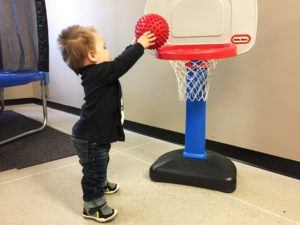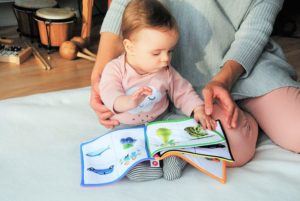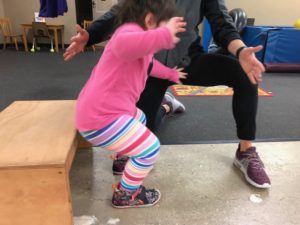Month: March 2015
WHAT DEVELOPMENTAL SKILLS SHOULD MY CHILD BE DOING BY 24 MONTHS?
GROSS MOTOR SKILLS
* Stoops to retrieve toy and returns to stand
* Kicks ball
* Jumps down off low surface, jumps forward
* Goes up stairs without a rail placing both feet on each step
FINE MOTOR SKILLS
* Imitates horizontal and vertical strokes
* Can match 3 shapes
* Builds 6 cube tower
* Places simple puzzle pieces that match a formed shape
SELF HELP SKILLS
* Can help pull up pants
* Puts head through hole of shirt, finds armholes
* Efficient spoon feeder, some difficulties with scooping still
SPEECH/LANGUAGE SKILLS
* Has vocabulary of at least 100 words
* Uses 2 words phrases on a regular basis
* Uses some 2 word utterances
* Uses some pronouns
* Is at least 60% intelligible to all listeners
* Follows 2 step related commands
If your child is not doing most of the skills above, consult your pediatrician and consider getting a therapy evaluation. A therapist can give you ideas of how to encourage development at home.
Read More10 DEVELOPMENTAL BENEFITS OF READING!
- One on one interaction with your child!
- Pre-reading skills (how you hold a book, reading left to right, what words look like)
- Helps develop fine motor skills for turning pages
- Helps develop understanding of action words (running, swinging, eating)
- Teaches concepts of space (under, over, below, in)
- Increases your child’s vocabulary
- Many books promote rhyming skills (important for future reading and writing)
- Strengthens the relationship of listening and talking
- Helps your child learn what sounds the letters make
- Helps your child learn color, number and shape concepts!
PHYSICAL THERAPY AND ORTHOTICS
Physical therapists play a critical role in identifying the need for orthotics. The decision to use orthotics is based on the assessment of range of motion, foot alignment, voluntary control of movement, muscle tone, and functional level of the child. The foot provides stability and mobility; therefore, an orthosis will affect both of these functions.
Orthotics provide stability and improved function by controlling range of motion and posture. They can be used for children who present with hypertonia or hypotonia. In children with hypertonia, orthotics reduce the influence of abnormal tonic reflexes of the foot, ankle, and leg. They decrease spasticity by prolonged stretch and pressure on the tendons of the triceps surea muscle and toe flexors. In children with hypotonia, orthotics help to correct pes planus, therefore giving the child external stability of the foot and ankle.
Children who wear orthotics present with a decreased amount of fixing and compensatory patterns because the orthotics require children to use and strengthen the appropriate muscles. Wearing orthotics result in improved motions of the pelvis, trunk, and lower extremity. They also prevent or support surgery and the use of Botox intervention.
Most Common Types of Orthotics:
- Plantar flexion stop ankle foot orthotics (AFOs) extend just distal to the knee and provide total contact with the ankle and foot. With this type of orthosis, you can choose to have free dorsiflexion control by eliminating the strap that goes around the lower leg. This type of orthosis prevents excessive ankle plantarflexion, and is used with children who require knee and ankle control.
- Supramalleolar AFOs extend just superior to the malleoli. It is used for children who have knee control, but lack ankle control. This orthosis offers the child external stabilization of the ankle and foot.
- Foot orthotics do not extend to the malleoli. Minimal control foot orthotics are shoe inserts, and maximum control foot orthotics extend just distal to the malleoli, controlling the calcaneus. These are used mostly for children who pronate and only need a small amount of support.
Physical therapists at ABC Pediatric Therapy are trained to cast and measure for orthotics. We are also trained in fitting and modifying them as necessary. We most commonly recommend Cascade or Surestep orthotics, and work closely with area orthotists. All orthotics are ordered based on the individual needs of the child. Prices can vary depending upon the type of orthosis. Insurance typically covers a portion of the cost of orthotics with a prescription from the doctor and a letter of medical necessity written by the therapist. It is recommended that parents call their insurance company to verify the benefits covered under their specific insurance plan.
If you have a client who you think could benefit from orthotics, call ABC at (513) 755-6600 –we are happy to answer any questions you may have.
Read More
 Skip to content
Skip to content


